Mingzhi Yu
University of Pittsburgh
Impact of Experiencing Misrecognition by Teachable Agents on Learning and Rapport
Jun 11, 2023
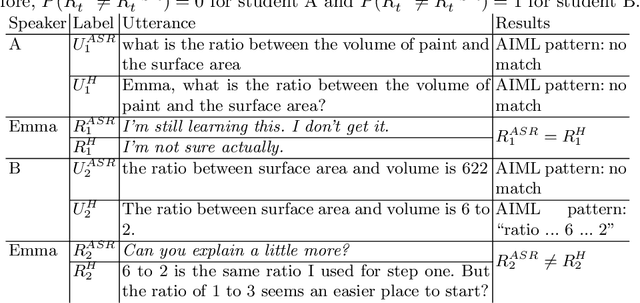
Abstract:While speech-enabled teachable agents have some advantages over typing-based ones, they are vulnerable to errors stemming from misrecognition by automatic speech recognition (ASR). These errors may propagate, resulting in unexpected changes in the flow of conversation. We analyzed how such changes are linked with learning gains and learners' rapport with the agents. Our results show they are not related to learning gains or rapport, regardless of the types of responses the agents should have returned given the correct input from learners without ASR errors. We also discuss the implications for optimal error-recovery policies for teachable agents that can be drawn from these findings.
Comparison of Lexical Alignment with a Teachable Robot in Human-Robot and Human-Human-Robot Interactions
Sep 23, 2022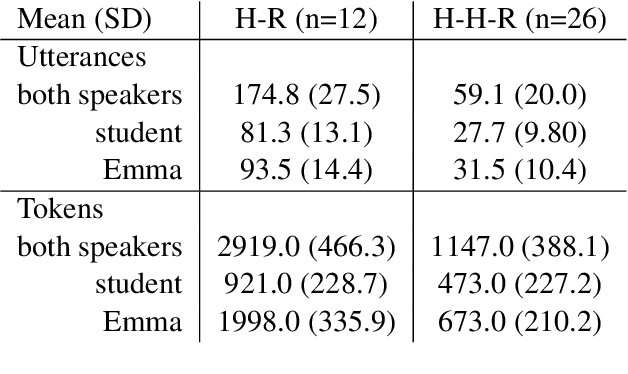
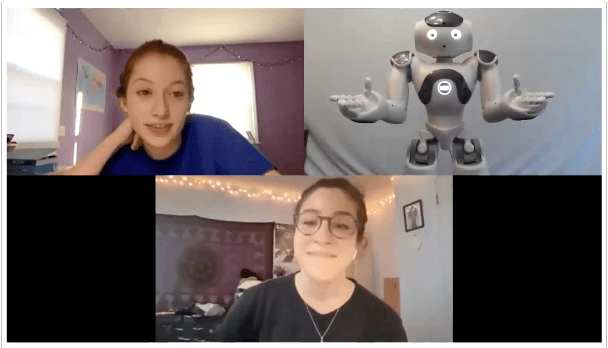
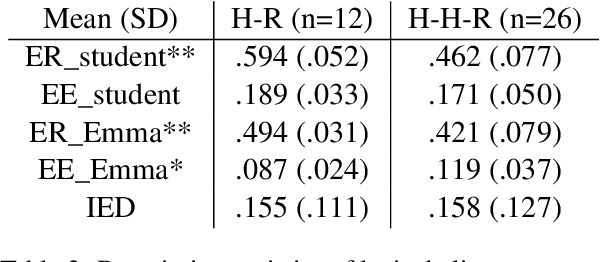
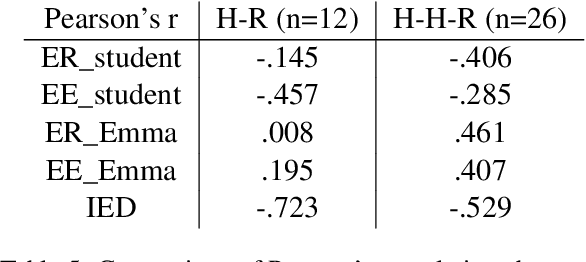
Abstract:Speakers build rapport in the process of aligning conversational behaviors with each other. Rapport engendered with a teachable agent while instructing domain material has been shown to promote learning. Past work on lexical alignment in the field of education suffers from limitations in both the measures used to quantify alignment and the types of interactions in which alignment with agents has been studied. In this paper, we apply alignment measures based on a data-driven notion of shared expressions (possibly composed of multiple words) and compare alignment in one-on-one human-robot (H-R) interactions with the H-R portions of collaborative human-human-robot (H-H-R) interactions. We find that students in the H-R setting align with a teachable robot more than in the H-H-R setting and that the relationship between lexical alignment and rapport is more complex than what is predicted by previous theoretical and empirical work.
A Neural Network-Based Linguistic Similarity Measure for Entrainment in Conversations
Sep 04, 2021



Abstract:Linguistic entrainment is a phenomenon where people tend to mimic each other in conversation. The core instrument to quantify entrainment is a linguistic similarity measure between conversational partners. Most of the current similarity measures are based on bag-of-words approaches that rely on linguistic markers, ignoring the overall language structure and dialogue context. To address this issue, we propose to use a neural network model to perform the similarity measure for entrainment. Our model is context-aware, and it further leverages a novel component to learn the shared high-level linguistic features across dialogues. We first investigate the effectiveness of our novel component. Then we use the model to perform similarity measure in a corpus-based entrainment analysis. We observe promising results for both evaluation tasks.
Leveraging Linguistic Coordination in Reranking N-Best Candidates For End-to-End Response Selection Using BERT
May 27, 2021



Abstract:Retrieval-based dialogue systems select the best response from many candidates. Although many state-of-the-art models have shown promising performance in dialogue response selection tasks, there is still quite a gap between R@1 and R@10 performance. To address this, we propose to leverage linguistic coordination (a phenomenon that individuals tend to develop similar linguistic behaviors in conversation) to rerank the N-best candidates produced by BERT, a state-of-the-art pre-trained language model. Our results show an improvement in R@1 compared to BERT baselines, demonstrating the utility of repairing machine-generated outputs by leveraging a linguistic theory.
Identifying Personality Traits Using Overlap Dynamics in Multiparty Dialogue
Sep 02, 2019



Abstract:Research on human spoken language has shown that speech plays an important role in identifying speaker personality traits. In this work, we propose an approach for identifying speaker personality traits using overlap dynamics in multiparty spoken dialogues. We first define a set of novel features representing the overlap dynamics of each speaker. We then investigate the impact of speaker personality traits on these features using ANOVA tests. We find that features of overlap dynamics significantly vary for speakers with different levels of both Extraversion and Conscientiousness. Finally, we find that classifiers using only overlap dynamics features outperform random guessing in identifying Extraversion and Agreeableness, and that the improvements are statistically significant.
Investigating the Relationship between Multi-Party Linguistic Entrainment, Team Characteristics, and the Perception of Team Social Outcomes
Sep 02, 2019



Abstract:Multi-party linguistic entrainment refers to the phenomenon that speakers tend to speak more similarly during conversation. We first developed new measures of multi-party entrainment on features describing linguistic style, and then examined the relationship between entrainment and team characteristics in terms of gender composition, team size, and diversity. Next, we predicted the perception of team social outcomes using multi-party linguistic entrainment and team characteristics with a hierarchical regression model. We found that teams with greater gender diversity had higher minimum convergence than teams with less gender diversity. Entrainment contributed significantly to predicting perceived team social outcomes both alone and controlling for team characteristics.
 Add to Chrome
Add to Chrome Add to Firefox
Add to Firefox Add to Edge
Add to Edge